Accepted Scientific Name: Copiapoa serpentisulcata F.Ritter
Cactus (Paris) xv. No. 66, 22 (1960)
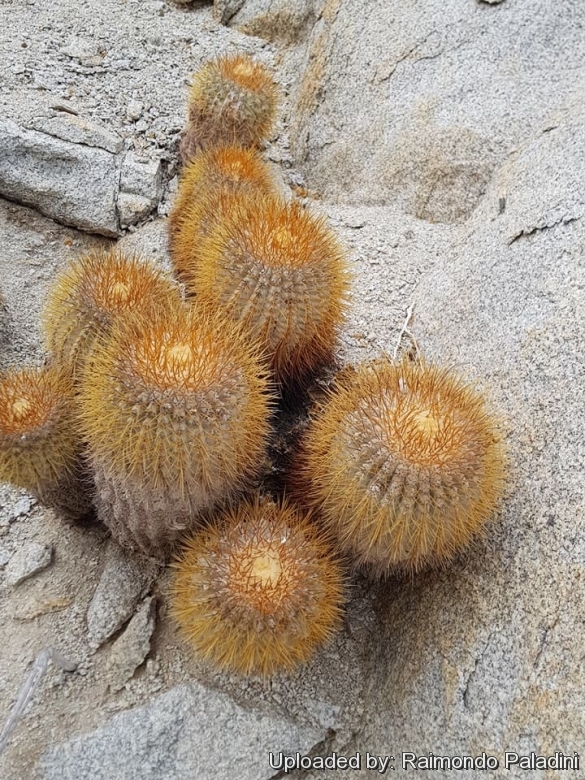
Copiapoa goldii Photo by: Raimondo Paladini
Chile Jannuary 2018.
Origin and Habitat: Cifuncho (or Chanaral to Esmeralda?) Chile.
Synonyms:
See all synonyms of Copiapoa serpentisulcata
back
Accepted name in llifle Database:Copiapoa serpentisulcata F.RitterCactus (Paris) xv. No. 66, 22 (1960)Synonymy: 5
back
Description: Copiapoa goldiiSN|1389]]SN|18542]] is a nomen nudum (undescribed name) used by some seeds collectors and succulent traders to indicate plant from different provenances. The few field name referred to this controversial taxon may not fit to the same species.
Field number PV2172 (Collector: Petr Pavelka fron Cifuncho) is probably a form of Copipoa serpentisulcata with short dense golden spines. (but Cifuncho is about 75 km from the Copiapoa serpentisulcataSN|1420]]SN|9824]] area, and the only Copiapoa found in this place are Copiapoa rupestrisSN|1389]]SN|1403]] and Copiapoa sp. Cifuncho which is probably a form of Copiapoa longistamineaSN|1403]]SN|1389]])
Field number KK603 (Collector: Karel Kníže from Chanaral to Esmeralda) probably correspond to a form of Copiapoa cinerascensSN|9824]]SN|1420]].
Field number JN841 (Collector: Jan Novák fron Cifuncho) Same as PV2172 (?)
Field number BIG 100 (Collector: Ignazio Blando) Locality: Cifuncho, more than 20 ribs (Copiapoa longistamineaSN|18542]]SN|1389]]?)
Subspecies, varieties, forms and cultivars of plants belonging to the Copiapoa serpentisulcata goup
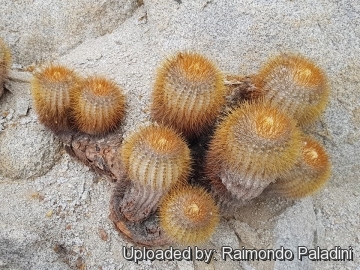 Copiapoa goldii, Chile Jannuary 2018. Photo by: Raimondo Paladini
Copiapoa goldii, Chile Jannuary 2018. Photo by: Raimondo Paladini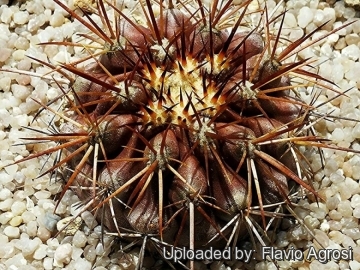 Copiapoa rupestris BIG100 (Collector: Ignazio Blando) Cifuncho. Has more than 20 ribs (C. longistaminea?) Photo by: Flavio Agrosi
Copiapoa rupestris BIG100 (Collector: Ignazio Blando) Cifuncho. Has more than 20 ribs (C. longistaminea?) Photo by: Flavio Agrosi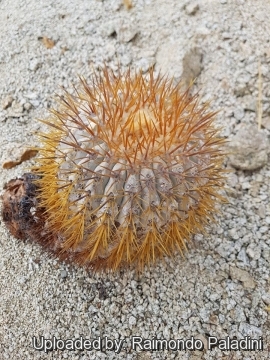 Copiapoa goldii, Chile Jannuary 2018. Photo by: Raimondo Paladini
Copiapoa goldii, Chile Jannuary 2018. Photo by: Raimondo Paladini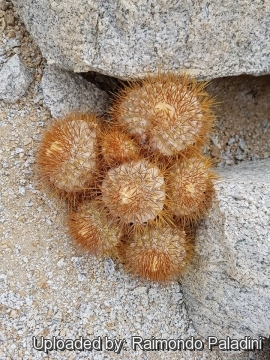 Copiapoa goldii, Chile Jannuary 2018. Photo by: Raimondo Paladini
Copiapoa goldii, Chile Jannuary 2018. Photo by: Raimondo Paladini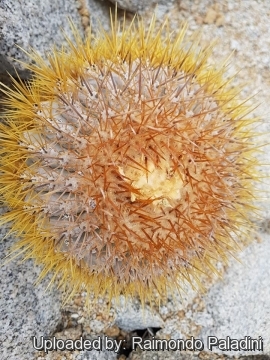 Copiapoa goldii, Chile Jannuary 2018. Photo by: Raimondo Paladini
Copiapoa goldii, Chile Jannuary 2018. Photo by: Raimondo Paladini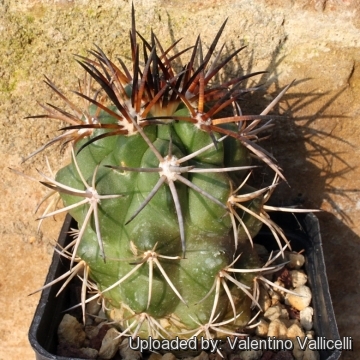 KK603 Chanaral to Esmeralda, Chile Altitude: 200m Photo by: Valentino Vallicelli
KK603 Chanaral to Esmeralda, Chile Altitude: 200m Photo by: Valentino Vallicelli KK603 Chanaral to Esmeralda, Chile Altitude: 200m Photo by: Valentino Vallicelli
KK603 Chanaral to Esmeralda, Chile Altitude: 200m Photo by: Valentino VallicelliSend a photo of this plant.The gallery now contains thousands of pictures, however it is possible to do even more. We are, of course, seeking photos of species not yet shown in the gallery but not only that, we are also looking for better pictures than those already present.
Read More... Cultivation and Propagation: Considering that Copiapoa comes from a habitat with an extremely arid climate, they are remarkably tolerant of pot culture. They requires also an appropriate air circulation. Copiapoas are summer grower species easy to cultivate.
Growth rate: This is a slow growing cactus kept for the beauty of its form that will make clumps given the best conditions.
Soils: It likes very coarse mineral cactus mix soil, but can become too elongated if compost is too rich.
Repotting: Use pot with good drainage.
Watering: It requires light but regular waterings in summer, but let the soil mix dry between waterings, but do not overwater (Rot prone), it must be strictly kept dry throughout the winter quiescent period since it is very sensitive to any moisture excesses keep dry in winter.
Fertilization: Feed with a high potassium fertilizer in summer.
Hardiness: Not highly tolerant of a great deal of frost. They need to be kept in a cool place during winter rest and are resistant to light frost if kept on the dry side prior to, and during, cold weather ( they are hardy to -2 C ° C short periods). However some warmth throughout the year will increase the grower's success (minimum 5° to 10°C during rest season).
Exposition: Requires full sun or light shade and careful watering to keep plant compact with strong coloured spines. Tends to bronze in strong light, which encourages flowering and heavy spine production. Light shadow my be useful in the hottest summer days.
Uses: It is an excellent plant for container growing. It always looks good and stays small. It look fine in a cold greenhouse and frame or outdoor in a rockery.
Pests & diseases: It may be attractive to a variety of insects, but plants in good condition should be nearly pest-free, particularly if they are grown in a mineral potting-mix, with good exposure and ventilation. Nonetheless, there are several pests to watch for:
- Red spiders: Red spiders may be effectively rubbed up by watering the infested plants from above.
- Mealy bugs: Mealy bugs occasionally develop aerial into the new growth among the wool with disfiguring results, but the worst types develop underground on the roots and are invisible except by their effects.
- Scales: Scales are rarely a problem. It is wise to treat your whole collection with a systemic insecticide twice a year in spring and autumn.
- Rot: Rot is only a minor problem with cacti if the plants are watered and “aired” correctly. If they are not, fungicides won't help all that much. To prevent rottenness it is also advisable to surround its root neck by very rough sand or grit, this help a fast water drainage.
Propagation: Seeds (or offsets if available), Grafting is often used to speed growth rate and to create a back-up to plants in collection. Seeds germinate in 7-14 days at 21-27° C in spring, remove gradually the glass cover as soon the plants will be well rooted (ca 1-2 weeks) and keep ventilated, no full sun for young plants!


















